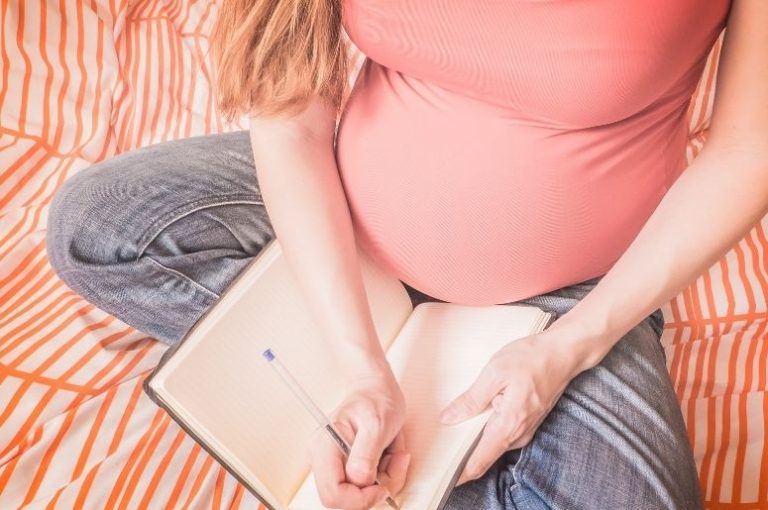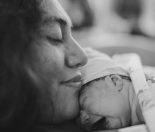Many women in Aotearoa-New Zealand make a birth plan for their labour and birth. A birth plan can help to guide your midwives and doctors and make them aware of your wishes.
What is a birth plan?
A birth plan is an individual plan of your wishes and expectations for your labour and birth. It may be a discussion between yourself and your lead maternity carer (LMC) or may be written, so that all maternity professionals involved in your care can be made aware of your wishes.
Birth plans vary greatly – from an expression of desire to cut the cord, to a lengthy and involved plan of what you would prefer to happen during each stage of labour.
Does everybody have a birth plan?
Many people go into labour without a birth plan, preferring to discuss eventualities if and when they arise. And this can be fine if this works for you.
It’s important to know that your options will be explained to you and your birth partner and your consent will be sought for all matters during your labour and birth. Only in the case of a rare emergency would anything be done without prior explanation. The key is ensuring that you understand those explanations – hence it is a great idea to attend childbirth education classes or obtain information from your LMC prior to your labour and birth.
However, many women do have a birth plan, which is beneficial as it enables those who don’t have a prior relationship with you to know about your wishes. It also focuses your attention on possible outcomes prior to the birth.
And remember, all those who care for you are on your side – hoping to enable you to have the very best labour and birth possible.
What should I include in my birth plan?
Here is an information list to consider for your birth plan with possible options and choices. You can download a print version of the birth plan checklist above to capture your thoughts on here: Birth Plan Template
- Hospital birth grab ‘n go bag
- Place of birth
- Water in birth
- Support people
- Contacting your midwife/LMC
- Music, lighting and atmosphere
- Pain relief
- Food and drink during labour
- Positions during labour
- Baby at birth
- Third stage of labour
Hospital birth grab ‘n go bag
When you’re heavily pregnant, and dealing with labour pains, the last thing you want to be doing is leaning over a suitcase, guessing at the items you might need during a stay in hospital! If you’ve chosen to give birth at the hospital you should consider pre-packing your grab ‘n go hospital bag.
Place of birth
This is a vital choice to make and it may be affected by geographical location, local services, personal preferences, previous childbirths or medical conditions. Options for where to give birth in New Zealand include home birth (for women without previous complications), birth centres and hospital maternity units.
Water in birth
Water is a well known relaxant and also creates buoyancy and pain relief. Pools for water birth are offered in many maternity units and can be hired for home births too. Discuss water birth with your midwife if this is something you would like to try – not all maternity professionals are proficient with water births. Other uses of water include warm or cool showers, as well as having water on hand for drinking.
Support people
Who you have with you at the birth is vital to how you will feel about the experience. In order to birth with ease, we all need to feel safe and secure – consider whether your chosen birth partner can support you through a long or short labour, easy or complicated. And would you like other family or friends there to experience your birth with you. It’s your birth, you decide.
Contacting your midwife
Ensure that you discuss this with your LMC midwife later in the pregnancy. Some midwives like to know as soon as you think you are in labour, as they have their own childcare to arrange.
Music, lighting and atmosphere
Part of feeling safe and keeping your birth simple, is being able to relax during labour. The atmosphere of the birth room, such as low lighting and gentle music (or ACDC if you prefer!) may help you relax your muscles and help you to cope with the awesome journey you’re undertaking. Other options include oil burners, massage oil, as well as the people you choose to have in the room.
Pain relief
There are many options for pain relief in birth. Many women feel that it’s the length of labour that is so difficult to cope with, and no-one ever knows how long their labour will last – your midwife and doctor can only give you estimates based on ‘the average woman’. So keep an open mind about pain relief, there’s no perfect pain relief. And consider a number of options in different scenarios, so you can be flexible depending on how the birth goes.
Food and drink during labour
It’s vital to stay well hydrated in labour! Include frequent sips of water, perhaps with electrolytes included – especially, if you are in a birthing pool or birthing during the summer months. If the body is short of fluids the contractions will become less effective, slowing the labour. Some women vomit in labour so this can be hard, but it’s vital.
Usually women won’t want to eat while in labour, but if you do feel hungry have some bite-sized and easy to digest snacks on hand. Check with your midwife, as women who are at risk of a problem in labour are sometimes advised not to eat in case they need an anaesthetic.
Positions during labour
There is no perfect position for labour – movement and changes in position will help you to be more flexible and aid the baby’s journey through the pelvis. Great ideas include hands and knees, all fours, lying on your side, standing, squatting (if you have strong legs!). Avoid sitting and lying on your back as this creates an uphill journey for the baby!
You should also consider your support person here. Will they provide massage, where will they be at birth, how can they help you to change between positions.
Baby at birth
A few ideas that you may wish to consider are –
- Position of the baby at birth?
- Who will cut the cord?
- Do you want the baby passed straight to you at birth?
Third stage of labour
There are options around the delivery of the placenta and membranes – an injection is available to reduce the risk of haemorrhage, but many women prefer to remain ‘drug free’ during a normal birth. Discuss this with your LMC if you are unsure. You may also want to decide what happens to the placenta after birth.
Pre-existing considerations for your birth plan
For some women many of the above choices are limited by pre-existing condition, such as diabetes, or a previous birth, for example a Caesarean section.
Many individual wishes can still be taken into account, but your safety and that of your baby are paramount and therefore you may sometimes be advised against certain pathways. Do remember to discuss your wishes with your midwife and doctors – they may not be able to give you the choices you want, but they may be able to help you understand the option they are advising for you and your family.
Extra information for your birth plan
The very best advice that I can give is to remain flexible throughout your labour and birth and to ensure that you understand the explanations that health professionals are giving you.
There are many types of pain relief in birth available for women in labour, make sure you understand what your choices are. Check out this article for more information on Promoting Natural Birth. And now is a good time to learn more about different types of labour and birth – check out our information on Normal Birth, Caesarean Section and Assisted Birth







